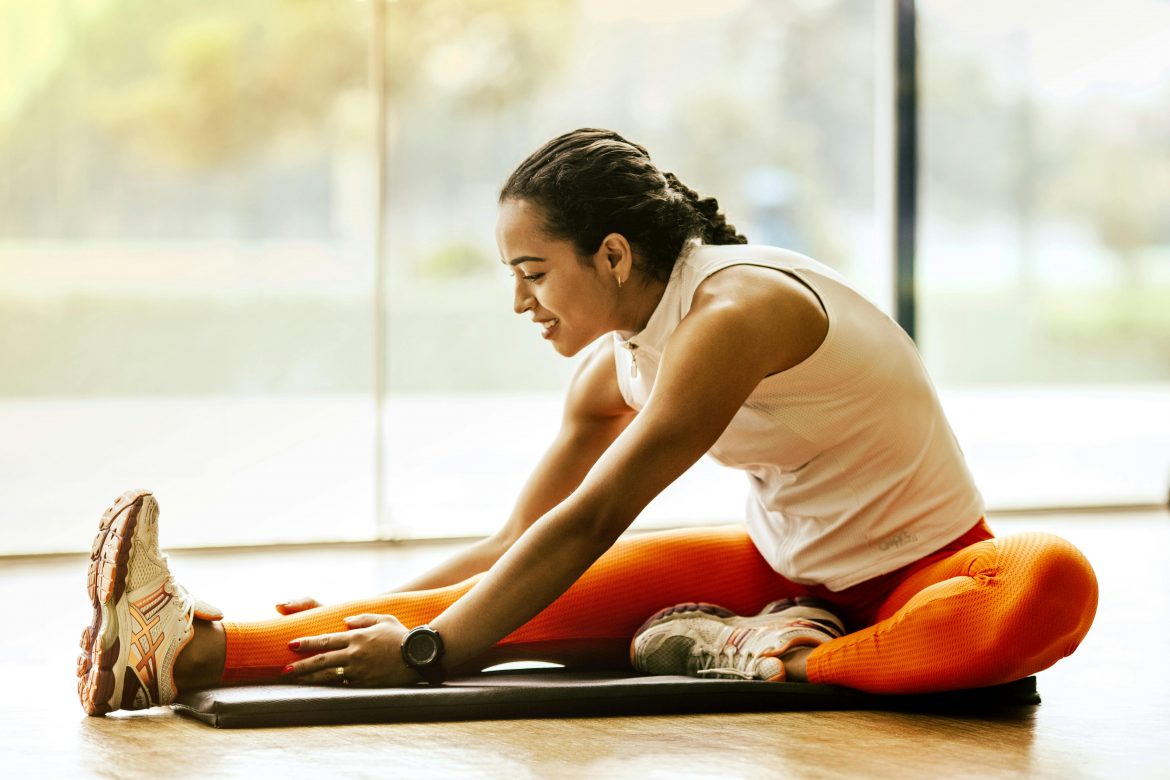With any form of exercise, experiencing muscle soreness after a workout is common, especially when you push your limits or try a new routine. This soreness, is a natural part of muscle recovery and growth. While the soreness is a good sign that you’re challenging your muscles, the aches can be inconvenient, possibly limiting you in your next workout.
There is no way to prevent the pain but there are effective ways to alleviate that post-workout pain and get back to feeling your best.
1. Stretch it out
Stretching post-exercise helps to relieve tension in sore muscles, improves flexibility, and enhances circulation, which speeds up recovery. Focus on dynamic stretches before your workout to warm up the muscles and static stretches afterward to release built-up tension.
Leg day or not, it’s very important to stretch your hip flexors, hamstrings and glutes. Tension is held in these muscles and joints. Loosening them up before a workout will enforce a deeper mind to muscle connection.
Active recovery is another way to still move your muscles but not as intense as a complete workout. Try a light walk, yoga or pilates, or sauna and steam room sessions.
2. Hydrate and nourish your body
Water plays a critical role in muscle function and recovery. After intense exercise, muscles lose water through sweat and require replenishment to maintain their elasticity and reduce cramping. Besides water, consider replenishing electrolytes to prevent muscle fatigue.
Pro tip: A very effective and natural alternative to store bought electrolytes, is pink salt. Add a small amount of Himalayan salt to your water.
Pair your hydration with nutrient-dense, protein-rich foods that support muscle repair, such as bananas for potassium that will prevent cramps, Greek yogurt for muscle repair – not to mention, high in protein and berries for antioxidants which reduces inflammation.
ALSO SEE: Carbs, proteins & fats: how to find the perfect balance for your body
3. Cold and hot therapy
Alternating cold and hot therapy has been shown to alleviate pain and reduce inflammation. Cold packs and cold plunges are especially useful immediately following intense exercise to reduce swelling, numb sore areas and boosting energy levels. Apply ice or cold packs to the affected area for about 15 minutes. Later, you can switch to heat therapy to encourage blood flow and relax the muscles.
Hot therapy include heating pads and warm water bottles, warm baths and hot showers.
Pro tip: Add Epsom salts can further relieve muscle tension due to the magnesium
Alternating between cold and hot can give you the best of both worlds and help accelerate muscle recovery.
4. Try foam rolling or massage
Foam rolling and massage help release muscle knots, improve flexibility, and break up tight connective tissue around your muscles. You can use a foam roller on larger muscle groups like your quads, hamstrings, and back. Roll gently over the sore spots and pause for a few seconds on areas of tightness to release tension. If you don’t have a foam roller, try using a tennis for smaller areas like calves or glutes.
ALSO SEE: What’s the deal with foam rollers? Do you need one?
Additionally, scheduling a professional sports massage, physio or chiropractor appointment or even practicing self-massage techniques can promote muscle relaxation, reduce inflammation, and stimulate blood flow to sore areas, helping muscles heal more effectively.
5. Get plenty of rest and sleep
Rest and sleep are often overlooked, especially when you have a goal in mind – but it’s essential for muscle recovery. During deep sleep, the body produces growth hormones that repair damaged tissues and promote muscle recovery. Aim for 7-9 hours of quality sleep per night to reduce overall pain and improve muscle resilience.
If you’re new to a workout or trying a more intense routine, you may need more rest days between sessions to allow your body to adjust and repair adequately.
Listen to your body, give yourself time to recover, and soon, post-workout soreness will become less of a challenge and more of a sign of progress!
ALSO SEE:
Featured Image: Pexels

